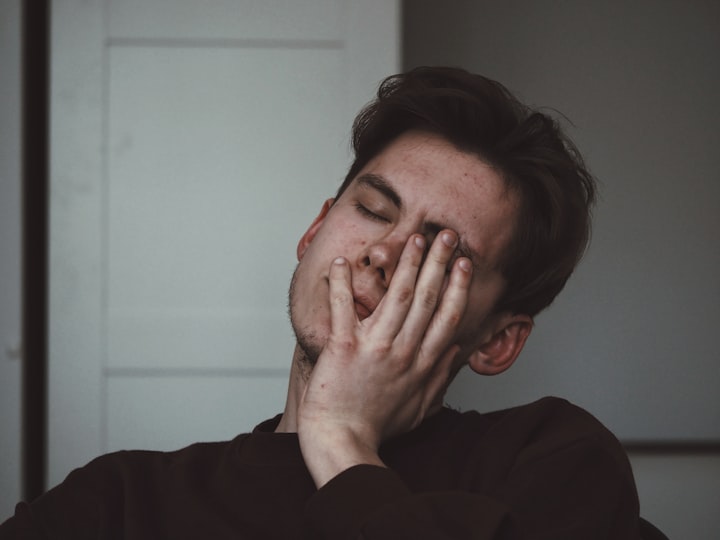
- Ancient Methods for Headache Treatment
During ancient times in Greece, headaches were seen as powerful afflictions. Those suffering from headaches would pray to Asclepius, the god of medicine, for relief. If the pain persisted, medical practitioners would resort to a well-known remedy: drilling a small hole in the skull to drain blood that was believed to be infected. This extreme technique, called trepanation, often resulted in a more permanent condition instead of curing the headache. Luckily, modern doctors no longer use power tools to treat headaches. Nevertheless, there is still much to be learned about this age-old ailment.
- Headache Classification: Primary and Secondary Headaches
In the present day, headaches are classified into two categories: primary headaches and secondary headaches. Primary headaches are not symptomatic of an underlying disease, injury, or condition; they are the condition itself. We will delve into primary headaches shortly, as although they account for 50% of reported cases, we have more knowledge about secondary headaches. Secondary headaches are caused by other health problems, with triggers ranging from dehydration and caffeine withdrawal to head and neck injuries and heart disease. Doctors have identified over 150 diagnosable types of headaches, each with its own potential causes, symptoms, and treatments.
- The Causes of Headaches: Sinus Infections as an Example
Let's consider a common example: sinus infections. The sinuses are a series of cavities located behind the forehead, nose, and upper cheeks. When the sinuses become infected, our immune response warms up the area, attacking the bacteria and causing inflammation that extends beyond the usual size of the cavities. The swollen sinuses exert pressure on the cranial arteries and veins, as well as the muscles in the neck and head. Pain receptors in these areas, known as nociceptors, are triggered, prompting the brain to release neuropeptides that inflame the cranial blood vessels, leading to swelling and heat in the head. This discomfort, combined with hypersensitive head muscles, results in the throbbing, sore pain of a headache.

- The Complexity of Headache Origins and Primary Headaches
Not all headache pain is caused by swelling. Tense muscles and inflamed, sensitive nerves contribute varying degrees of discomfort to different types of headaches. However, all cases of headaches are reactions to some form of cranial irritant. While the cause of secondary headaches is evident, the origins of primary headaches remain unknown. Scientists are still researching potential triggers for the three primary headache types: recurring and long-lasting migraines, intensely painful cluster headaches, and the most common type, tension headaches.
- Tension Headaches: Causes and Uncertainties
As the name suggests, tension headaches are characterized by the sensation of a tight band squeezing the head. These headaches increase the tenderness of the pericranial muscles, which then pulsate painfully with blood and oxygen. Patients often report stress, dehydration, and hormone changes as triggers for tension headaches, but these factors do not perfectly align with the symptoms. For instance, dehydration headaches cause swelling in the frontal lobe, which does not correspond to the location of pain in tension headaches. Scientists have proposed various theories regarding the actual cause, including spasming blood vessels and overly sensitive nociceptors, but no definitive answer has been found.
- Severe Headache Types: Migraines and Cluster Headaches
Meanwhile, the majority of headache research focuses on more severe primary headache types. Migraines are recurring headaches that create a vice-like sensation on the skull, lasting anywhere from four hours to three days. In 20% of cases, these attacks can overwhelm the brain with electrical energy, leading to hyper-excited sensory nerve endings. This results in hallucinations called auras, which may include seeing flashing lights, geometric patterns, or experiencing tingling sensations. Cluster headaches, another type of primary headache, cause burning and stabbing pain behind one eye, accompanied by a red eye, constricted pupil, and drooping eyelid.
- Alleviating Headaches and Future Research Directions
What can be done to alleviate these conditions that significantly impact people's quality of life? Tension headaches and most secondary cases can be managed with over-the-counter pain medications, such as anti-inflammatory drugs that reduce cranial swelling. Additionally, many triggers for secondary headaches, such as dehydration, eye strain, and stress, can be proactively avoided. Migraines and cluster headaches are more complex, and reliable treatments that work for everyone have not yet been discovered. However, pharmacologists and neurologists are actively working to unravel these pressing mysteries that burden our minds.






Comments
Itslin is not accepting comments at the moment
Want to show your support? Send them a one-off tip.